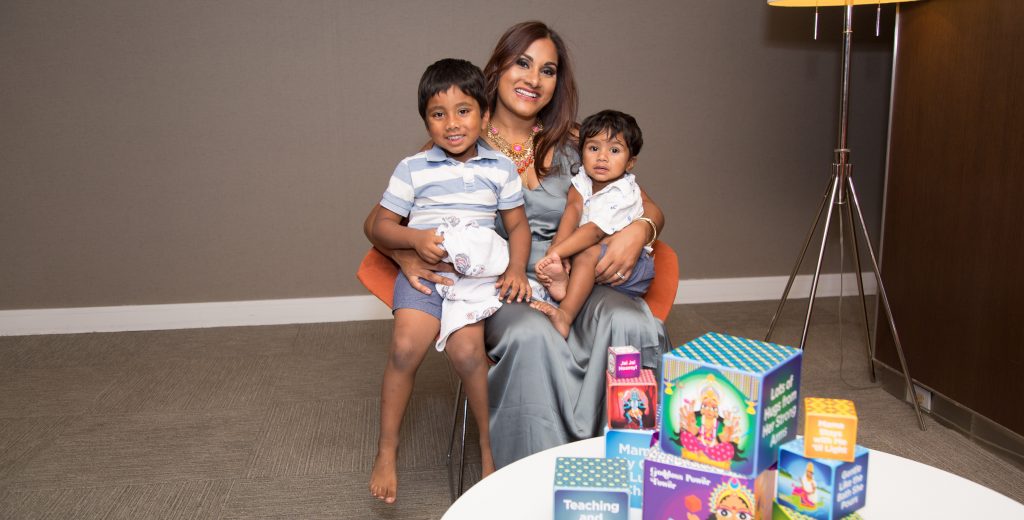
“Mama, don’t go! I want to come with you.” That sweet little voice resonates in my mind over and over again almost daily as I get ready to head out to work for the day or every time I try to leave the house to go do something for myself. That heartbreaking moment when I have to say goodbye to my kids as I walk out the door creates that worst sort of guilt: Mom Guilt.
When I was pregnant with my older son, a part of me wanted to have the baby arrive already and a part of me wanted to stay pregnant out of fear of the responsibilities ahead. Working full time and taking New York City public transportation, constantly carrying around a pack of Tums for my heartburn, I was feeling guilty that I was not enjoying the glorious pregnancy phase everyone talked about.
Standing there with swollen elephant feet and the excess weight gained during pregnancy wearing uncomfortable maternity clothes, I will never forget the tears rolling down my eyes as I got off the subway, climbing up three flights of steps to get to my corporate job. This is the first time I felt mom guilt.
[Read More: Mom on a Mission: Reframing the ‘Mom Guilt’ Conversation]
I do not care what anyone says, having gone through two pregnancies, that first month with the baby is not beautiful! Trying to take less than five-minute showers and constantly being next to my baby, all I wanted was a second to breathe and a corner to sleep, while the baby just wanted to feed off my body. Bearing the pain of breastfeeding, I cringed when other mothers scoffed at the idea of formula. As months went by, my baby was no longer an infant but a little boy. Leaving him daily to go to work and trying to focus on my career and missing some important milestones of his life, I again felt mom guilt.
As I adjusted to parenting, my friends would ask me to hang out. There were social events that were not kid friendly that I wanted to attend but at the back of my head, I felt guilty to leave my son. Trust me, it did not get easier with my second child either. Seeing their sad faces when I walked out the door or left them at childcare, really played with my emotions.
[Read More: 7 Simple Ways to Raise a Confident Child ]
Let me list some of the things I have experienced mom guilt over:
- Going back to work after maternity leave
- Leaving my children at daycare or with a babysitter
- Feeding my child formula because I couldn’t produce enough breast milk
- Feeding my children through the fast food drive-thrus some days
- Placing my child in front of the TV to take a shower
- Taking time for myself to get a haircut or go shopping
- Yelling at my kids when I get frustrated
- Feeling mom guilt that I can’t send my kids to all extracurricular activities to keep up with everyone
This list can go on and on. How many of you have hidden in the bathroom to catch a break for that moment of peace? I know I have. All mothers young and old experience mom guilt from time to time and you are not alone if you do too.
So how do I deal with mom guilt? I realized that if I do not go to work or take time for myself, the bills won’t get paid and a healthier me is more important for my children than a mom that is burnt out. The most important thing you can do is to be happy for your children. Try your best to provide nutritious food options to your children but if you have to go through a drive-thru once in a while it is not a big deal. Try finding activities online or at your local library or community that does not cost so much money. You have to see what you can do every day versus what you should be doing.
You are an amazing mom whether you choose to work full time or to stay at home. We face the same fears of mom guilt: leaving our children to follow our passions or to take a break for ourselves. You are creating an amazing childhood for your children and doing a great job.
Mom guilt has taught me how to be present when I am not with my children as well as when I am with my children to give my full undivided attention. Mom guilt is a catalyst that allows me to maximize the time I am away from my children and makes me more efficient. So as a mother just like you, I understand your daily struggles and my advice to you is to ditch the mom guilt! It’s OK to take a break.
All photos in this post are courtesy of Susan.




